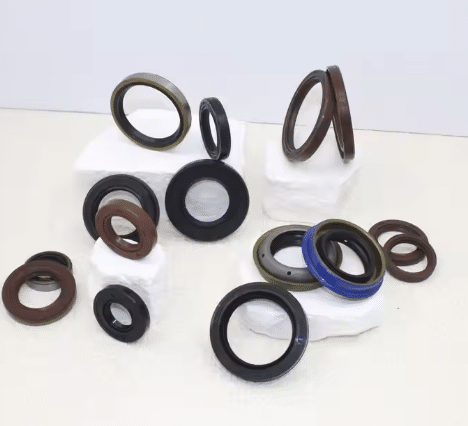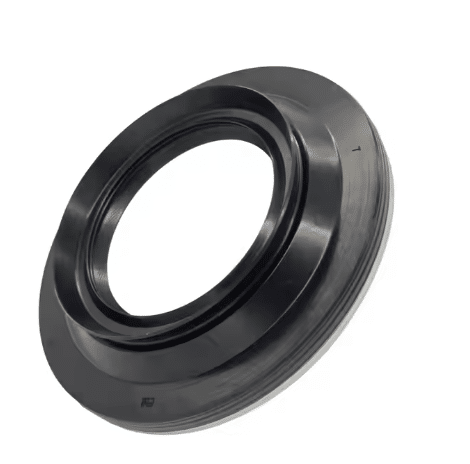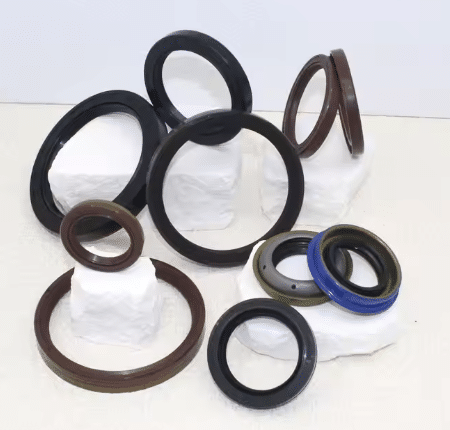Not all differential failures start with noise—many begin with a small leak from a worn-out seal. So how do you choose the right differential seal, prevent failure, and maintain your system long-term?
There are several types of differential seals including pinion, axle, and cover seals. They can fail due to heat, aging, or misalignment. Regular inspection and material selection are key to longevity.

Whether you're a mechanic, fleet manager, or industrial buyer, understanding differential seals ensures lower costs and better performance. Let’s explore their types, common failures, and best maintenance practices.
What are the different types of differential seals?
You may think a seal is just a ring of rubber—but each type plays a unique role in protecting your differential from oil loss and contamination.
Differential seals are categorized into three main types: pinion seals (input shaft), axle seals (side output), and cover/gasket seals (housing plate). Each one serves a different purpose and requires specific fitment.
What types of differential seals are used in vehicles?
| 씰 유형 | 위치 | 기능 | 일반 재료 |
|---|---|---|---|
| Pinion Seal | Driveshaft input | Seals pinion shaft | NBR, FKM |
| Axle Seal | Output shaft ends | Seals axle tubes | 영어: NBR (네이버) |
| Cover Seal | Rear housing | Prevents rear cover leak | Cork, rubber gasket |
Our customers often request TG4 double-lip seals for pinion applications, especially in trucks and off-road equipment.
What causes differential seals to fail?
Seal failure doesn’t always happen suddenly—it often builds over time due to heat, age, or contamination.
The most common causes include degraded rubber, incorrect installation, overfilled or contaminated oil, and improper torque during replacement.

Why do differential seals fail prematurely?
| 원인 | 설명 | 방지 |
|---|---|---|
| Aged material | Rubber loses elasticity | Replace every 50,000–70,000 km |
| Overheating | Towing & heavy loads expand parts | 사용 FKM-based seals |
| Bad install | Misalignment damages seal lip | Use yoke holders + torque tools |
| Oil contamination | Grit damages seal surface | Flush oil periodically |
| Inferior seals | Cheap rubber fails fast | Use OEM or certified oil seals |
One U.S. fleet client saw 30% fewer failures after switching to dual-material FKM+NBR seals and following our maintenance guide.
How can I maintain my differential seals to avoid leaks?
Many seal failures can be avoided with regular visual inspection and routine oil changes.
Maintaining your differential seals involves checking for leaks monthly, inspecting axle ends, and replacing fluid at recommended intervals with proper gear oil.

What are the best practices for differential seal maintenance?
| Task | Frequency | Tools Needed |
|---|---|---|
| Visual inspection | Monthly | Flashlight, lift |
| Oil check & refill | Every 20,000 km | Fluid pump |
| Seal replacement | Every 50,000–70,000 km | Puller, press tool |
| Housing torque check | Annually | Torque wrench |
We recommend combining inspection with your normal service interval. Our seal storage guide can also help you keep spare seals in top condition.
Which seal material is best for differential applications?
Choosing the wrong material is a common cause of premature failure, especially in high-heat or long-duty operations.
NBR works for normal conditions. FKM and PTFE are best for heat, pressure, and chemical exposure. For sealing performance and lifespan, always match material to your application.

How do I choose the best material for my differential seals?
| 재료 | 최상의 사용 | Drawback |
|---|---|---|
| 영어: NBR (네이버) | Standard conditions | Not for high heat |
| 에프케이엠 | High temp, long life | Slightly expensive |
| 실리콘 | Flexible, low-pressure | Limited abrasion resistance |
| PTFE | Chemical & pressure | Harder to install |
One of our European clients uses FKM O-링 exclusively in their OEM axle production lines to reduce returns and warranty claims.
Can I upgrade from standard seals to high-performance options?
Yes—especially if you manage industrial fleets or commercial vehicles. The performance gain justifies the small added cost.
Upgrading to double-lip, dual-material, or high-precision seals increases protection and extends service life.
Should I switch to premium or dual-lip differential seals?
| 씰 유형 | 혜택 | 이상적 |
|---|---|---|
| Single-lip | Basic oil retention | Cars, low load |
| Double-lip | Oil + dust protection | Trucks, off-road |
| FKM/NBR combo | Heat & flexibility | Fleet, long duty |
| Custom-sized | Perfect fit, no leaks | OEM, older models |
우리는 제공합니다 custom-size differential seals to B2B clients looking to improve performance and reduce failure rates.
결론
Differential seals protect your axle system from costly damage. Choosing the right type, maintaining them regularly, and upgrading material ensures long-term reliability.
Ready to seal with confidence? Choose Hengoseal for quality and performance
From NBR to FKM to custom dual-lip designs, we deliver what your drivetrain needs. Fast global shipping, low MOQ, and OEM quality.
📧 이메일: [email protected]
📲 WhatsApp: +86 17622979498
Related topic
오일 씰 가이드: 안정적인 작동을 위한 5가지 팁(2025)
FKM O-Rings for Heat & Chemical Resistance | 2025 Guide
O-Ring Selection & Pricing Guide: How to Find the Best Seal at the Right Price (2025)


